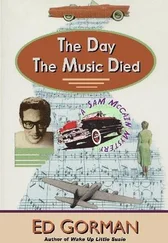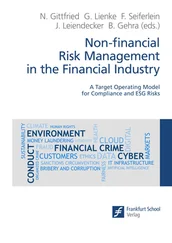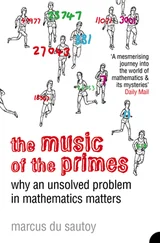Charles Ess, Digital Media Ethics , 2nd edition
Jordan Frith, Smartphones as Locative Media
Alexander Halavais, Search Engine Society , 2nd edition
Martin Hand, Ubiquitous Photography
Robert Hassan, The Information Society
Tim Jordan, Hacking
Graeme Kirkpatrick, Computer Games and the Social Imaginary
Leah A. Lievrouw, Alternative and Activist New Media
Rich Ling and Jonathan Donner, Mobile Communication
Donald Matheson and Stuart Allan, Digital War Reporting
Dhiraj Murthy, Twitter , 2nd edition
Zizi A. Papacharissi, A Private Sphere: Democracy in a Digital Age
Jill Walker Rettberg, Blogging , 2nd edition
Patrik Wikström, The Music Industry , 3rd edition
The Music Industry
Music in the Cloud
Third Edition
PATRIK WIKSTRÖM
polity
Copyright © Patrik Wikström 2020
The right of Patrik Wikström to be identified as Author of this Work has been asserted in accordance with the UK Copyright, Designs and Patents Act 1988.
First edition published in 2009 by Polity Press
Second edition published in 2013 by Polity Press
This third edition first published in 2020 by Polity Press
Polity Press
65 Bridge Street
Cambridge CB2 1UR, UK
Polity Press
101 Station Landing
Suite 300
Medford, MA 02155, USA
All rights reserved. Except for the quotation of short passages for the purpose of criticism and review, no part of this publication may be reproduced, stored in a retrieval system or transmitted, in any form or by any means, electronic, mechanical, photocopying, recording or otherwise, without the prior permission of the publisher.
ISBN-13: 978-1-5095-3016-8
A catalogue record for this book is available from the British Library.
Library of Congress Cataloging-in-Publication Data
Names: Wikström, Patrik, author.
Title: The music industry : music in the cloud / Patrik Wikstrom.
Description: Third ebdition | Medford : Polity, 2019. | Series: Digital media and society series | Includes bibliographical references and index. | Summary: “Since the first edition was published in 2009, Patrik Wikström’s book has become a go-to text for students and scholars. This thoroughly updated third edition provides an international overview of the music industry and its future prospects in the world of global entertainment”-- Provided by publisher.
Identifiers: LCCN 2019023989 (print) | LCCN 2019023990 (ebook) | ISBN 9781509530137 (hardback) | ISBN 9781509530144 (paperback) | ISBN 9781509530168 (epub)
Subjects: LCSH: Music trade--Technological innovations. | Music trade--History--21st century. | Sound recording industry. | Music and the Internet. | Music--Social aspects.
Classification: LCC ML3790 .W52 2019 (print) | LCC ML3790 (ebook) | DDC 338.4/778--dc23
LC record available at https://lccn.loc.gov/2019023989LC ebook record available at https://lccn.loc.gov/2019023990
The publisher has used its best endeavours to ensure that the URLs for external websites referred to in this book are correct and active at the time of going to press. However, the publisher has no responsibility for the websites and can make no guarantee that a site will remain live or that the content is or will remain appropriate.
Every effort has been made to trace all copyright holders, but if any have been inadvertently overlooked the publisher will be pleased to include any necessary credits in any subsequent reprint or edition.
For further information on Polity, visit our website: politybooks.com
For Pia
I would like to thank all the informants whom I have interviewed over the years. Your thoughts are at the centre of this work and without your involvement the project would not have been conceivable. I would also like to send thanks to my students, colleagues in academia and friends in the industry for helping me shape this book by giving me inspiration, encouragement and criticism along the way.
Introduction: Music in the Cloud
One Sunday in early March 2008, the industrial rock megastar Trent Reznor, a.k.a. Nine Inch Nails, released his sixth studio project, Ghosts I–IV . The project consisted in total of 36 instrumental songs recorded during ten weeks in the autumn of 2007. Things were different this time though, primarily because even though Nine Inch Nails was a global brand and Trent Reznor had millions of devoted fans all over the world, he was at the time without a contract with a major record label after the relationship with Interscope Records had ended. Reznor reflected on the termination of the contract a decade later: ‘We weren’t selling enough records to warrant the giant advances that we’d been promised; these were contracts that didn’t see the cliff coming’ (Marchese 2017). The termination of the contract with Interscope was the beginning of a period when Reznor was able to experiment freely with how to engage and communicate with his fans. Reznor announced on the Nine Inch Nails website that ‘As of right now Nine Inch Nails is a totally free agent, free of any recording contract with any label.’ ‘I have been under recording contracts for 18 years and have watched the business radically mutate from one thing to something inherently very different and it gives me great pleasure to be able to finally have a direct relationship with the audience as I see fit and appropriate.’
For Ghosts I–IV , Reznor decided that the appropriate distribution channel would be the official Nine Inch Nails website ‘ nin.com’. He also chose to release the songs under a licence that allowed fans to remix and redistribute the work in a multitude of different formats. On 13 March, Reznor launched the second phase of the project. First, multitrack versions of a number of songs from Ghosts were added to the remix section of ‘ nin.com’ where fans could upload their own remixes, listen to and review the remixes from other fans, vote for their favourites, and so on. Second, Reznor launched an Internet-based ‘Film Festival’ on YouTube where he invited fans to create and upload their visual interpretations of the songs. The fans’ reception of the Ghosts project cannot be labelled as anything but exceptional. By the end of 2008 fans had uploaded more than 2,000 videos to the Film Festival, and an unknown but large number of user-generated remixes had been posted to ‘ remix.nin.com’. Besides remixing and uploading the tracks from Ghosts I–IV , fans were also able to download nine of the original songs for free from the website. They were also offered four other product packages, ranging from a ‘$5 Download’ which included all 36 songs in various formats to a ‘$300 Ultra Deluxe Limited Edition Package’ which included downloads, CDs, DVDs and glossy booklets, all signed by Reznor himself. According to Reznor, during the first week after the launch 781,917 transactions generated $1,619,420 in sales revenue. In addition, the ‘$5 Download’ version was released on Amazon MP3 Downloads and remained as one of their top-selling albums, at least during March and April 2008. 1It is notable that this result was achieved while the album, in its entirety, obviously was also available via various illegal file-sharing networks and services.
Trent Reznor continued experimenting during the years that followed, both with his own projects and with others, but in September 2012, Reznor announced that his band How to Destroy Angels had signed with the Sony Music label, Columbia Records, to release a number of their upcoming albums (Reznor 2012). Reznor concluded in a Facebook post that ‘complete independent releasing has its great points but also comes with shortcomings’. When Nine Inch Nails’ eighth album ‘Hesitation Marks’ was released by Columbia Records in 2013, it marked the formal conclusion of Trent Reznor’s experiments with independent distribution and promotion.
Читать дальше












